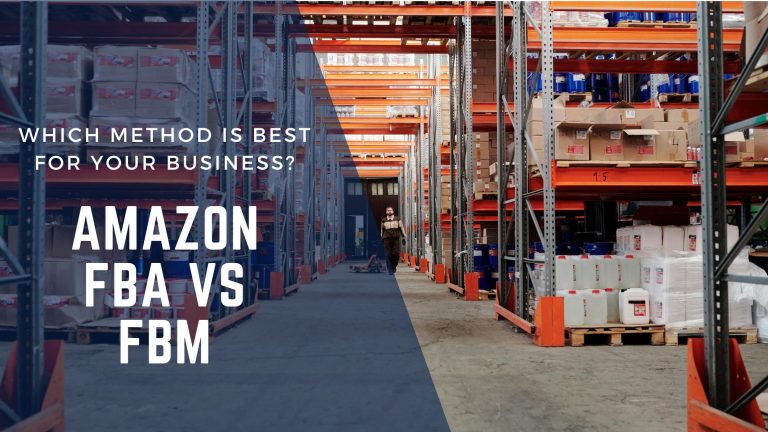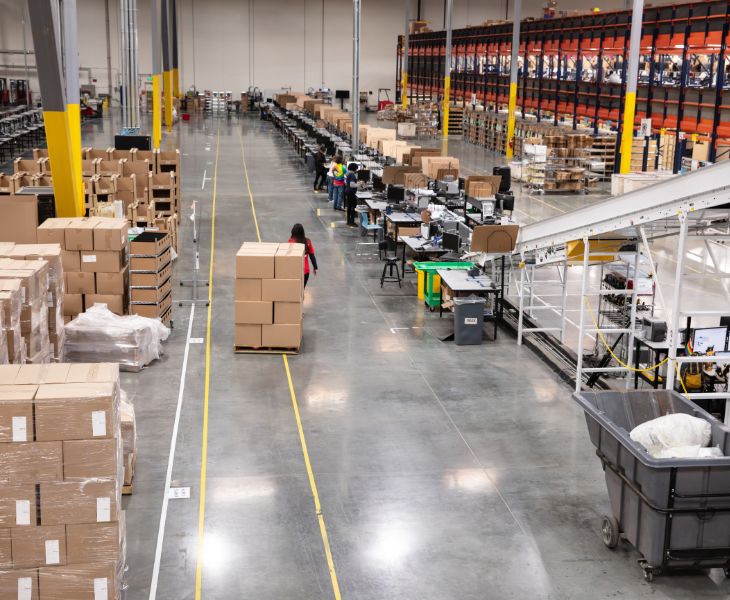Explore why most successful sellers prefer FBA and when FBM might make sense.
When it comes to fulfilling orders on Amazon, you have two main options: Fulfillment by Amazon (FBA) and Fulfillment by Merchant (FBM). While both methods allow you to sell on Amazon, they are vastly different in terms of speed, customer experience, cost-efficiency, and long-term scalability.
For most sellers—especially those focused on growth, automation, and Prime eligibility—FBA is the clear winner. In this blog, we’ll explain why FBA gives you a competitive edge, where FBM falls short, and how to choose the best strategy for your business.
Differences Between FBA & FBM
With FBA, you ship your inventory to Amazon’s warehouses, and they handle everything else—storage, packing, shipping, customer service, and even returns. Your products automatically become Prime-eligible, which makes them more attractive to millions of Amazon shoppers who prioritize fast and reliable delivery.
FBM, on the other hand, requires you to store, pick, pack, and ship the products yourself—or through a third-party logistics (3PL) provider. You’re also responsible for handling customer queries, returns, and maintaining shipping SLAs (service level agreement). This gives you more control—but also more responsibility, overhead, and complexity.
While FBM can work for certain sellers, it comes with several challenges that most new and growing businesses aren’t prepared to manage efficiently.
Why FBA is the Preferred Choice for Serious Sellers
One of the biggest reasons sellers choose FBA is speed and scalability. With Amazon managing fulfillment and customer service, you can focus on marketing, sourcing, and growing your brand. You don’t need to worry about hiring warehouse staff or dealing with customer complaints—that’s all handled for you.
FBA also boosts your Buy Box win rate, which is critical to increasing sales. Amazon favors listings that offer fast, Prime shipping and excellent customer experience. FBA ticks all those boxes automatically, helping you outrank FBM sellers—even if your prices are slightly higher.
Another major benefit of FBA is trust and convenience. Prime members are more likely to buy FBA products because they know they’ll arrive quickly, be packaged properly, and come with Amazon’s return policy. This leads to higher conversion rates, more repeat customers, and better reviews.
The Hidden Challenges of FBM
While FBM gives sellers full control over fulfillment, it comes with significant operational burdens that can quickly become overwhelming—especially for individual sellers or small teams.
One major issue is that you are responsible for storing inventory. This means dedicating physical space—whether it’s a spare room, garage, or rented warehouse—to hold your products. As your order volume grows, so does the need for more space, better organization, and stricter inventory tracking.
Another commonly overlooked challenge is daily courier coordination. When you receive an order, you must be physically present during pickup hours to hand over the parcel to the shipping partner. This adds pressure to your schedule and can disrupt your daily routine. Missing a pickup not only delays the shipment but also affects your seller performance metrics, which can lead to account warnings or listing suspensions.
FBM also requires you to manage packaging materials, shipping labels, and timely order dispatch. During peak seasons, handling all of this manually becomes time-consuming and error-prone. Unlike FBA, which automates this process, FBM puts the entire post-sale responsibility on your shoulders.
Lastly, customer service, return handling, and issue resolution must all be managed by you. One bad experience or delay can lead to negative reviews and poor seller feedback, directly impacting your credibility on Amazon.
These hidden challenges make FBM more complex than it initially seems—especially when compared to the convenience and automation offered by FBA.
The Hybrid Model: When FBM Still Has a Role
That said, FBM can still serve a purpose in specific situations. For example, if you sell oversized items that incur high FBA fees, or you have very slow-moving SKUs, FBM might help you cut costs. It also works as a temporary backup if your FBA inventory runs out and you still want to keep the listing active.
Many successful sellers use a hybrid model—FBA for their top-performing products and FBM for niche or bulky items. This gives them the flexibility to keep costs in check while maximizing Prime visibility where it matters most.
However, even in a hybrid setup, FBA should remain your core strategy—especially for fast-moving, competitive, or high-converting products.
Choosing the Best Fulfillment Method for Growth
If your goal is to scale your business with less hassle, FBA is the smarter, simpler, and more profitable option. It saves time, improves customer experience, and gives you access to Amazon’s powerful logistics network—all while increasing your chances of winning the Buy Box.
FBM may suit sellers with warehousing capabilities or highly specialized product needs, but for the vast majority—especially beginners and growth-focused brands—FBA offers a proven path to success. And with tools like Restock Reports, FBA Inventory Planning, and Buy Box Analytics, managing inventory within FBA has become easier than ever.
Conclusion
While both FBA and FBM have their place, FBA remains the go-to choice for serious Amazon sellers looking to scale faster, automate logistics, and tap into Prime’s customer trust. Unless you have a strong reason to handle fulfillment yourself, FBA provides more benefits with less operational burden.
So if you're aiming to grow your brand, win the Buy Box more often, and deliver consistently excellent customer experiences—FBA is where you want to be.
Choose smart, fulfil smarter—and watch your Amazon business thrive.








3 Responses
Good Insight comparison
Clear Insight comparison to understand both fulfillment options better
FBA benfits over FBM is explained clearly.comparison is the eye opener